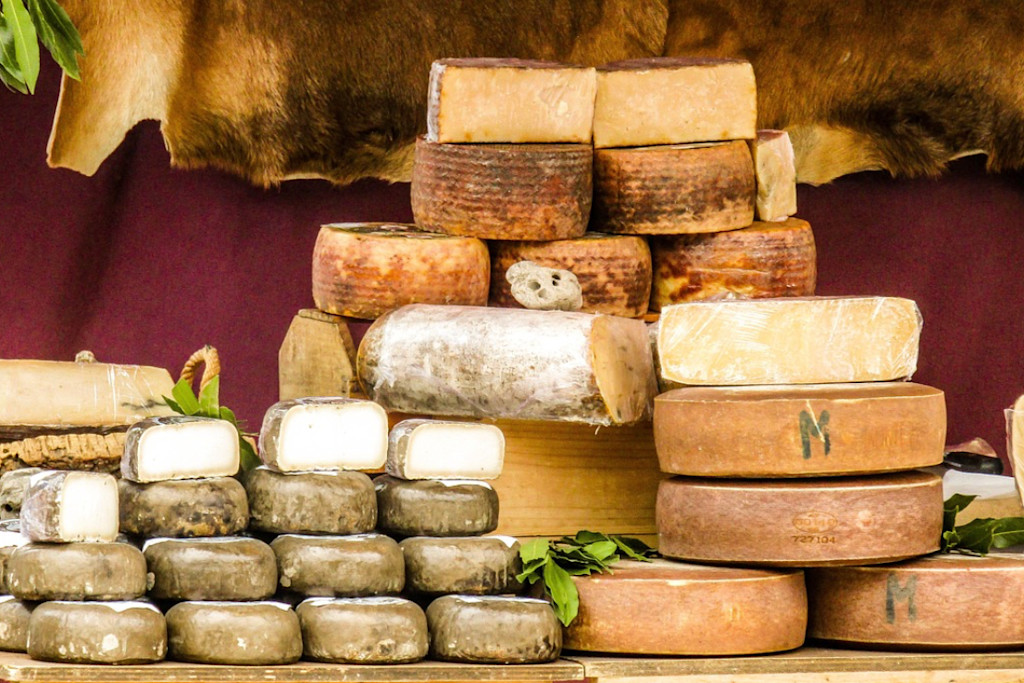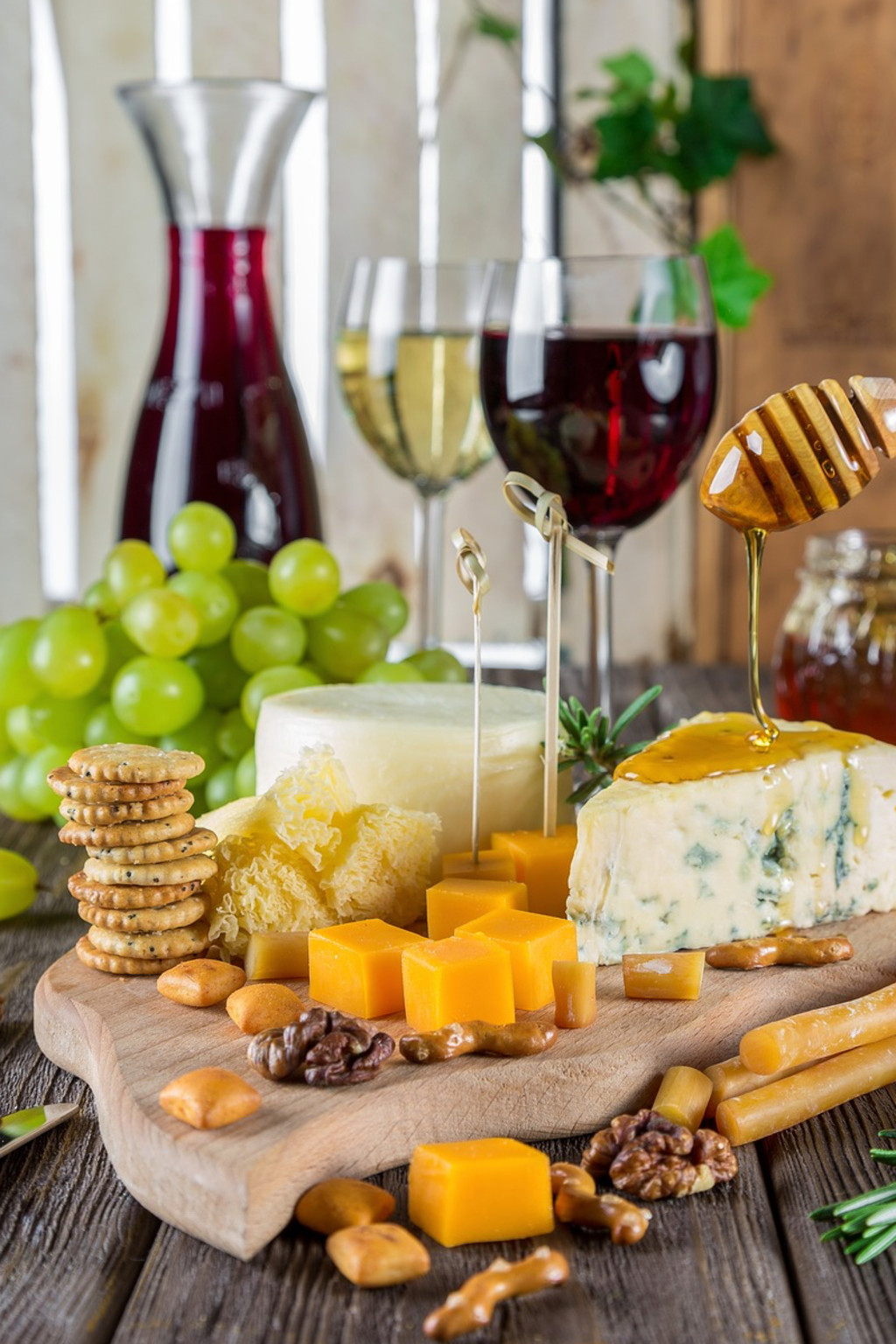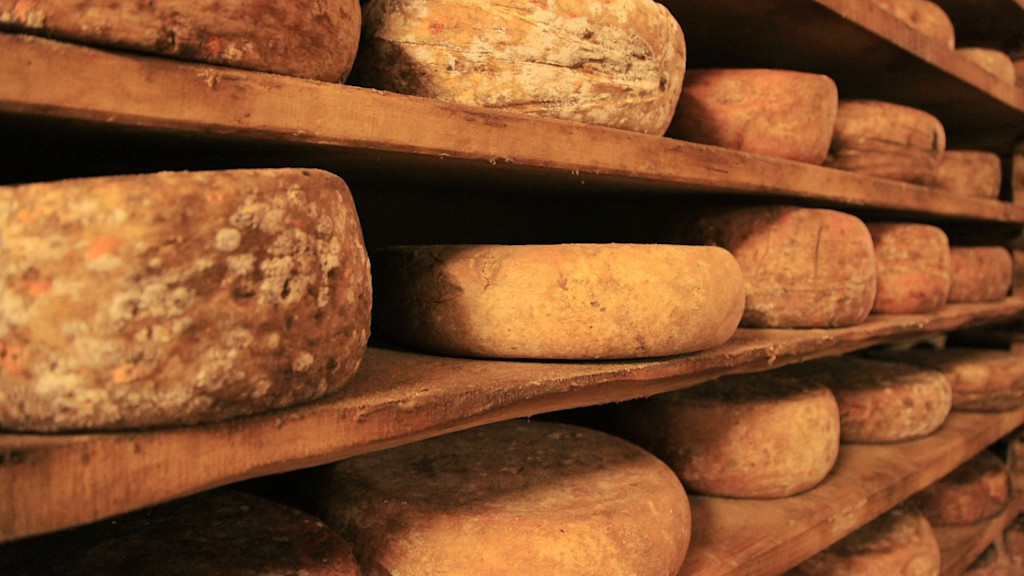
24 January 2023 | Gastronomy, Culture
French cheeses: history, production, regions
In 2015, the National Interprofessional Center for the Dairy Economy reported 1,200 French cheeses! Without a doubt, France is the country of cheese! The French are the biggest consumers of cheese, with 26kg of cheese consumed per inhabitant per year.
The raw milk cheese guide published by Profession Fromager has listed 1,800 cheeses from France, not counting cheeses made from pasteurized milk or thermized milk.

The history of cheese
It is the first food to have been fashioned by humans. Its discovery was made by chance, when our ancestors transported milk in skins (Animal skin sewn in the shape of a bag, serving as a container), the milk would have curdled. The history of cheese begins here!
In France, the production was done in cheese dairy (a 1000L millstone where workers pooled their milk to produce a large cheese) in the monasteries. Most of the great French cheeses are old recipes: Le Pont L'Evêque, Munster, Maroilles and Tête de Moines.

The cheese families
Fresh or white: These cheeses are not matured and have a high water content (77%). Examples of cheeses: La Faisselles, Le Petit-Suisse, La Brousse de Provence, Crémets d'Anjou, Mozzarella, Feta. Flavors: Tangy or flavored.
Soft cheese: The most famous: Camembert, Brie, Chaoource, Neuf Châtel. They were matured for 2 to 6 weeks. Easily recognizable with their white crust. Flavors: Mushrooms, hazelnut, or butter.
Soft cheese with washed rind: Orange in color and an ivory-coloured cheese. Its very strong smell, and mild flavor. Example of cheeses: Livarot, Epoisses, Maroilles, Pont-Lévèque, Munster are among the best known cheeses.

Blue cheese: Made from cow's or sheep's milk, it is speckled with bruises. Do you know where mold comes from? These are molds that developed during ripening when the dough was pierced with needles to leave spaces that allow the natural mold of the cheese. Exemples de fromages: le Roquefort, le Bleu d'Auvergne and la Fourme d'Ambert.
Uncooked pressed cheese: These are cheeses that have not been heated above 50 degrees. Made in monasteries from cow's or sheep's milk. Examples: Mimolette, Cantal, Tomme de Savoie, Raclette and Reblochon.
Pressed and cooked cheese: Very hard cheese. They are easily recognized by their dough dotted with holes and their fruity aroma.
Examples: Abondance, Comté, Beaufort, Guère and Emmental.
Cheese making steps
Curdling
Separation of whey from curd. To achieve this, the cheese maker uses rennet or fig juice.
Draining
This stage consists in evacuating the proportion of excess water in the curd. This can be done naturally by simply putting the curd in a cloth and letting its weight exert pressure or mechanically using a press.
Salting
Salting is carried out by rubbing or immersing the cheese in a "brine" bath. Salting gives the taste, texture and appearance of cheese.
Molding
It is used to give a visual shape to the cheese.
Refining
Of a more or less long duration (from a few weeks to several months or a few years) depending on the cheese. The longer the ripening, the more the cheese will have a strong taste.
Auvergne Rhône-Alpes
The most famous cheeses: Le Bleu, Reblochon, St-Nectaire...
Bourgogne Franche-Comté
The best known cheeses are: Emmental, Epoisses, Brillat-Savarin...
The Camembert comes from Normandy.
